Ever puzzled over how to achieve that perfect custom shade on your wooden furniture? What if I told you that mixing wood stains could be your solution? Let’s dive in!
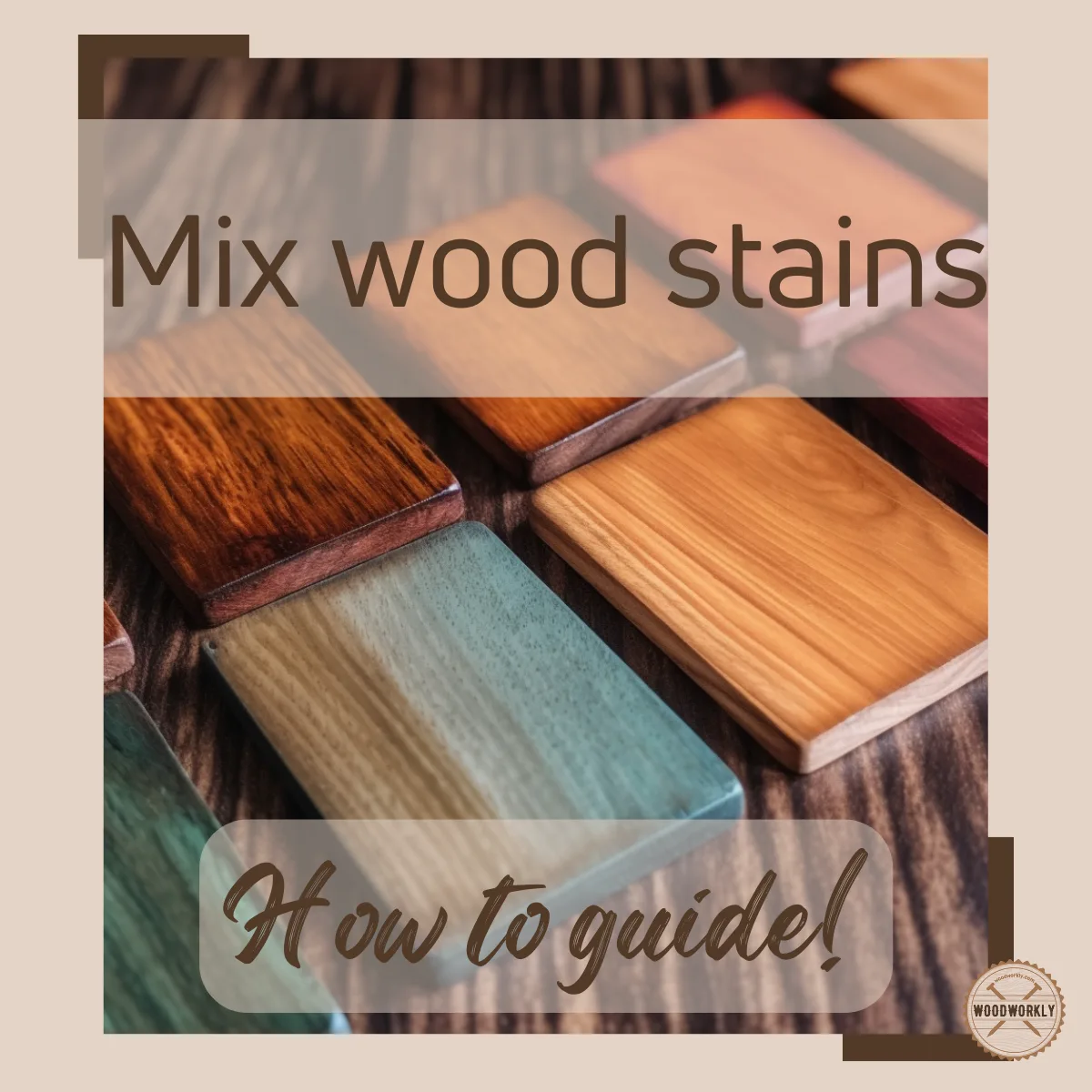
Wood stains are important to improve the look of wood and they’ll add unique beauty to woodworking projects and furniture.
There’re some occasions we worry when not getting the color we really want after applying wood stains.
Then we try to mix different stains to match and get the color we want.
But most people have no idea whether mixing wood stains is possible or not and some do that with the wrong methods.
With years of experience and after talking with many wood finishing experts, let me share with you my best practices when mixing wood stains.
So, let’s find out, Can you mix wood stains?
Yes, you can mix wood stains to get the color you want as long as their undertones are in the same color family. Otherwise, they’ll clash due to the undertone differences. Keep mixing wood stains until they meet the correct ratio to create custom colors that match exactly your woodwork.
But that’s just a quick snapshot and there’s a lot more to know.

So, in this article, I’ll dive deep into mixing wood stains and explain whether can you mix wood stains to get the color you want.
I’ll discuss the possibilities of mixing different brands of wood stains, and how to mix wood stains to create custom colors.
I’ll answer some frequently asked questions as well.
Let’s jump in!

Can You Mix Stain Colors?
Simply yes! you can mix stain colors to get the color you want.
Certainly! Mixing stain colors can open a whole new realm of possibilities for customizing your furniture or other wood pieces.
However, it’s not as simple as mixing two colors and hoping for the best.
There are important considerations and a fair bit of artistry involved. So let’s dive deeper into this!
Understanding the Basics
Before you begin, it’s crucial to understand that not all stains are created equal.
Wood stains are typically oil, water, or alcohol-based, and each of these types has its own characteristics.
For example, oil-based stains penetrate deeply and are great for bringing out the grain, while water-based stains dry faster and come in a wider range of colors.
So when you’re thinking of mixing stains, ensure you’re mixing the same types of stains to avoid unwanted reactions.
The Art of Mixing Wood Stains
The magic happens when you blend different stain colors to create a new hue or to complement the existing color of your wood piece.
It’s like being a painter with a palette, except your canvas is your furniture.
Here’s a quick example: Let’s say you have a light oak table, and you want to give it a richer, warmer appearance.
You could mix a medium brown stain with a little bit of red stain to create a warm, chestnut color.
By testing the mix on a scrap piece of oak, you can adjust the ratios until you get the exact shade you’re looking for.

Testing Your Stain Mix
Speaking of testing, that’s an absolute must! Wood types and finishes can be different, but your mix should look right in your home’s lighting.
It’s always best to view stains in person, in your home’s lighting, because lighting can bring out new undertones in the stain color.
Undertones and Grains Matter
If you’re introducing a new wood stain into a room, it should match the existing wood’s undertones.
The undertones of wood stains are often subtle, but they can make a big difference.
Warm undertones (red, pink, yellow, orange) mix well together, as do cool undertones (blue, purple, green).
Additionally, consider the grain of the wood.
Fine grains pair well with fine grains, and larger, more prominent wood grain patterns should be matched with similar grains.
This ensures that the overall aesthetic, be it rustic or elegant, remains consistent.
Since you know mixing stain colors is possible, let’s see what things you need to consider before starting the project.
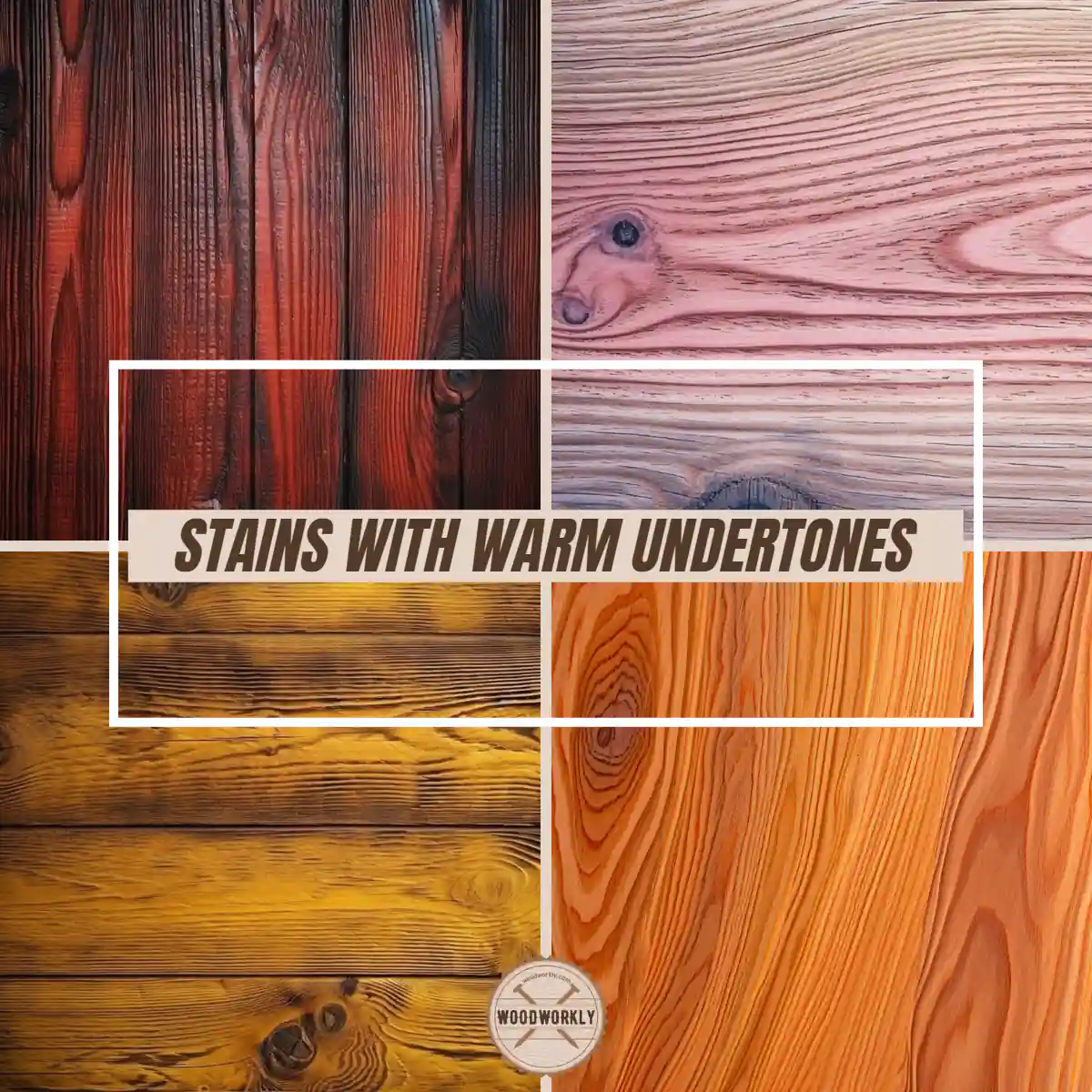
Things You Should Consider When Mixing Wood Stains
Here’s the list of things you should consider before mixing wood stains,
- Wood stains undertones should be the same.
- Consider the wood grain
- Request samples of wood stains and mix
- Understanding the primary color of wood stain and what are the accent colors
- Match the resulting custom color with other furniture, floor color, and wall colors.
So, let’s talk above factors in detail to get a better understanding of mixing wood stains.
1. Wood Stains Undertones Should Be the Same
Wood stains undertones can be categorized into main two types. They are, warm and cool. For example,
- Warm undertones are Pink, Red, Orange, Yellow
- Cool undertones are Purple, Blue, Green
When you’re mixing two types of wood stains make sure they’re from the same undertone family.
Otherwise, wood stains can clash with each other, and color bleeding can happen.
You can mix two, three, or more wood stains with each other as long as they’re from the same undertone family.
Even though wood types and finishers are different, the wood stains undertone family should be the same for better results.
2. Consider the Wood Grain
When you’re mixing wood stains to get a custom desirable color, it is important to match the colors of wood stains to the grain of the wood.
Make sure to match fine grains with fine grains and large wood grains with large wood grains.
For example, large wood grains are more rustic and casual.
So, you need to choose wood stains that won’t destroy the casual rustic look of the furniture with large wood grains.
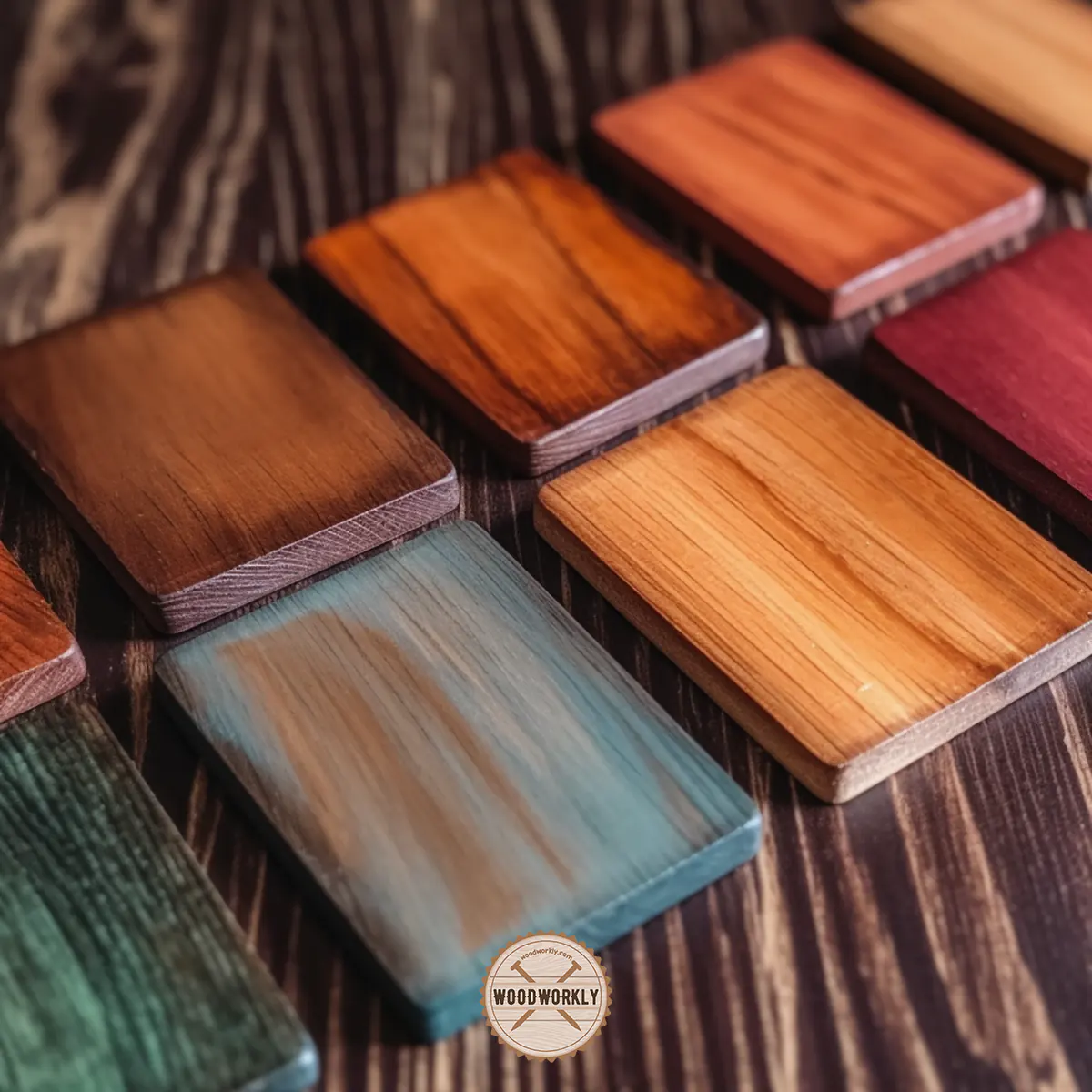
3. Request Samples of Wood Stains and Mix
If the wood stains that you’re going to select are not from the same undertone color family, better to request samples from each wood stain and mix them with a piece of wood to make sure whether they’re compatible or not.
Otherwise, your woodwork or furniture can be ruined if they’re incompatible.
Make sure to use the same type of wood piece as woodwork or furniture you’re willing to apply wood stains.
Then you’ll be able to get a clear idea about whether wood stains mix well and able to get the custom color you want without bleeding or clashing even though they’re not from the same undertone color family.
Selecting the best wood stains that match exactly as you want and result in the custom color is a matter of personal preference.
Also, make sure to check the resulting color under your home lighting.
Because sometimes when the resulting color looks plain white in stores, but under your home lighting, it may appear in unexpected colors like yellow, green, or grey undertones.
Tip: when you’re mixing different types of wood stains, make sure only of them has a primary grain or neither. Basically, both wood stains cannot have strong grains because if they do, they’ll compete and clash out.
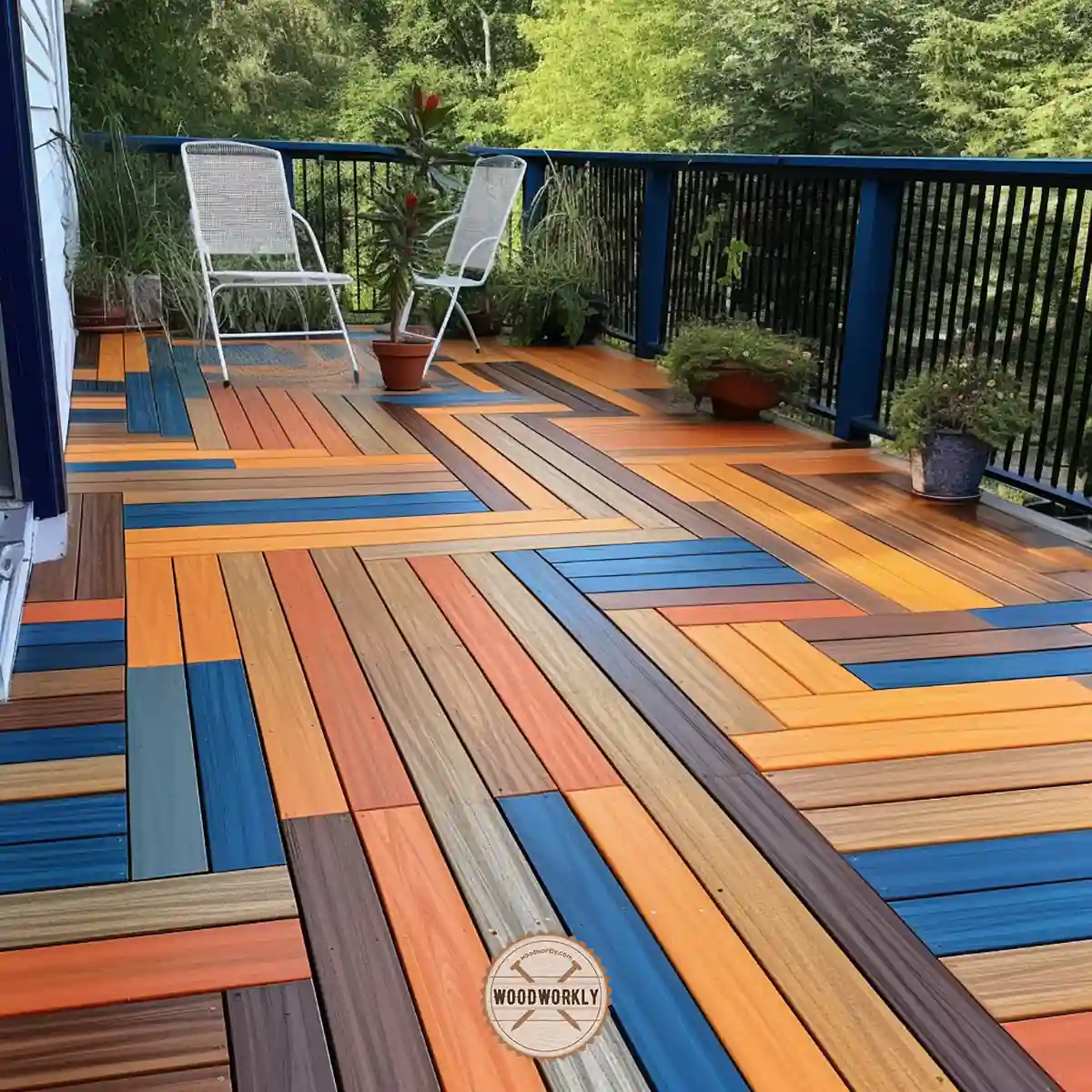
Can You Mix Oil-Based Stains with Water-Based Wood?
You cannot mix oil-based wood stains with water-based wood stains because oil-based stains and water-based stains don’t mix with each other.
Same as when you try to mix oil with water. They don’t mix.
The oil will rise to the top and a water-based stain will be at the bottom.
So, when you’re going to mix wood stains make sure both of them are either water-based or oil-based.
Water-based wood stains mix well with water-based stains and oil-based stains mix well with oil-based wood stains.
Can You Mix Different Brands of Wood Stain?
Yes, you can mix different brands of wood stains only if their undertones are from the same color family.
Mixing different brands of wood stain is not a problem to create a custom color that emphasizes the look of your woodworking project or furniture.
But I highly recommend testing mixing wood stains from different brands initially with a sample wood piece because of the quality issues of some brands available in the market.
Otherwise, the manufacturer is not a considerable factor when mixing wood stains as long as they don’t have any contaminations or quality issues.
So, before heading into the mixing process of wood stains, first, gather the supplies you’ll need for the project.

Supplies You Will Need to Mix Wood Stains
Here’re the suppliers you’ll need to mix wood stains.
- Wood stain products
- Plastic container
- Plastic cups
- Protective gloves
- Scrap wood
- Stick to stir
- Paintbrush
How To Mix Wood Stains?
Let’s find out how to mix wood stains to create custom colors as you wish. You need to have the right equipment and tools to make this succeed.
Here are the steps you need to follow when mixing wood stains properly.
- Select and prepare wood stains
- Test with scrap wood
- Test by mixing wood stains with different ratios
- Mix wood stains
- Apply to the woodwork
- Let it dry
So, let’s discuss each of the above steps separately from A to Z to get the perfect answer for mixing wood stains to create a custom color.
1. Select and Prepare Wood Stains
When you’re selecting the primary wood stain, make sure to choose a wood stain color that matches as close as possible with your desired finish.
It can be brown, grey, black, white, or any other stain.
When you’re selecting the secondary wood stain, make sure that will turn the primary stain color into the custom color you want.
This is important because the secondary wood stain color is the one that acts as the reactor to gain what you want.
If you aren’t sure what you should pick better take help from a store associate.
For example, brown wood stain matches perfectly with black wood stain to create aesthetic stain color.
Another thing you should consider is that both wood stains should belong to the same undertone family. You can mix wood stains from,
- Yellow undertone family
- Orange undertone family
- Red undertone family
- Pink undertone family
- Walnut-like undertone family
After you are selecting and preparing the wood stains that you’re going to mix, you can go to the next step to test them with scrap wood.
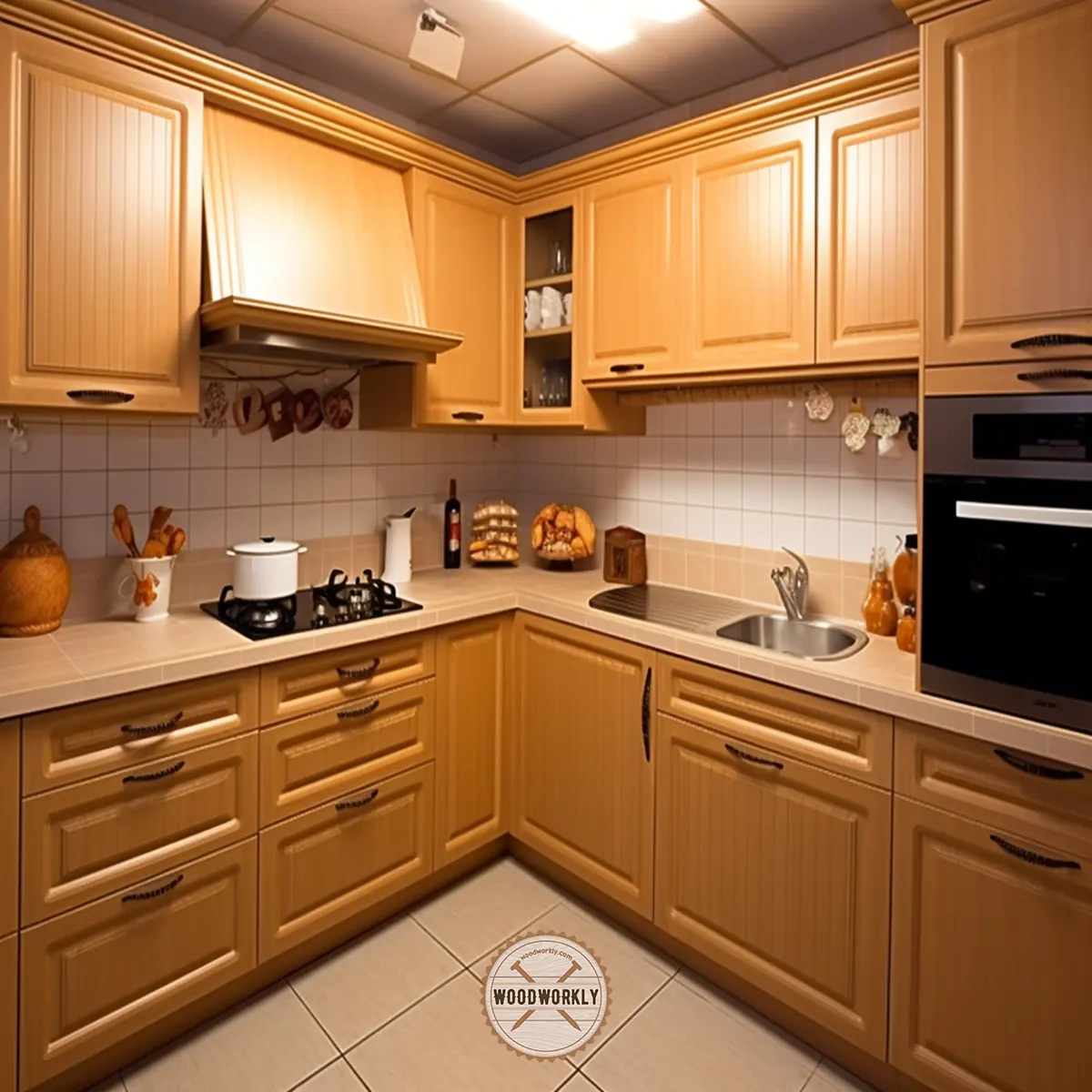
2. Test with Scrap Wood
For this step, you need to have scrap wood that is from the same wood type as your main woodwork, furniture, or scrap board.
Because to test which stain matches the wood perfectly, you need to use the same wood type for testing and the big project.
Apply both wood stains separately to the wood and notice how they blend with the natural color of the wood.
If both base and secondary wood stains blend well with the wood, you’re ready to go for the next step.
3. Test Wood Stains by Mixing Different Ratios
Take the plastic container and pour the primary wood stain by filling it up using plastic cups.
Then, use a different cup and fill it up with secondary wood stain and pour it into the plastic container.
Mix both stains in a plastic container thoroughly using the stirring stick.
Now, take the scrap wood and apply the wood stain mixture from the plastic container.
Then add small amounts of other stains until you get the correct ratio to create the custom color you want.
Getting the correct ratio to create a custom color is a matter of personal preference.
You can experiment by adding small amounts of different portions from each wood stain and mixing them until you get what you want.
Make sure to keep track of how many drops of amounts you have taken from each wood stain to get the mixing ratio.
Because that same mixing ratio will be applied to the whole project in the end.
Start with small amounts of portions and increase them as you move forward. But never go wrong with the mixing ratio.
Because that’s the ultimate formula you need to follow throughout the whole project.
4. Mix Wood Stains
Once you’ve figured out the correct ratio of wood stains, apply it to the total amount of stains that need for the project.
Then mix each of the wood stains according to the correct ratio to get one huge mixture of wood stains that will apply to the whole project.
5. Apply To The Woodwork
Once you make a sufficient amount of wood stain with the correct ratio, apply it to the whole project, woodwork, or furniture using a paintbrush.
Apply wood stain mixture to the whole woodworking project without missing any spots to avoid wood stain mistakes.
Make sure to apply thin coats of wood stain to avoid drying issues. Otherwise, it will lead to a tacky surface.
Apply wood stain along the direction of the wood grain for a better look and acceptance.
Plus apply a wood stain with even pressure to avoid random blotchiness.
6. Let the Wood Dry Completely
After the application of wood, stain let the wood dry for nearly 24 hours to complete the drying process.
Drying is so important when staining because many wood staining mistakes and issues happen due to insufficient drying time.
So, that’s all about how to mix wood stains and create a custom color.
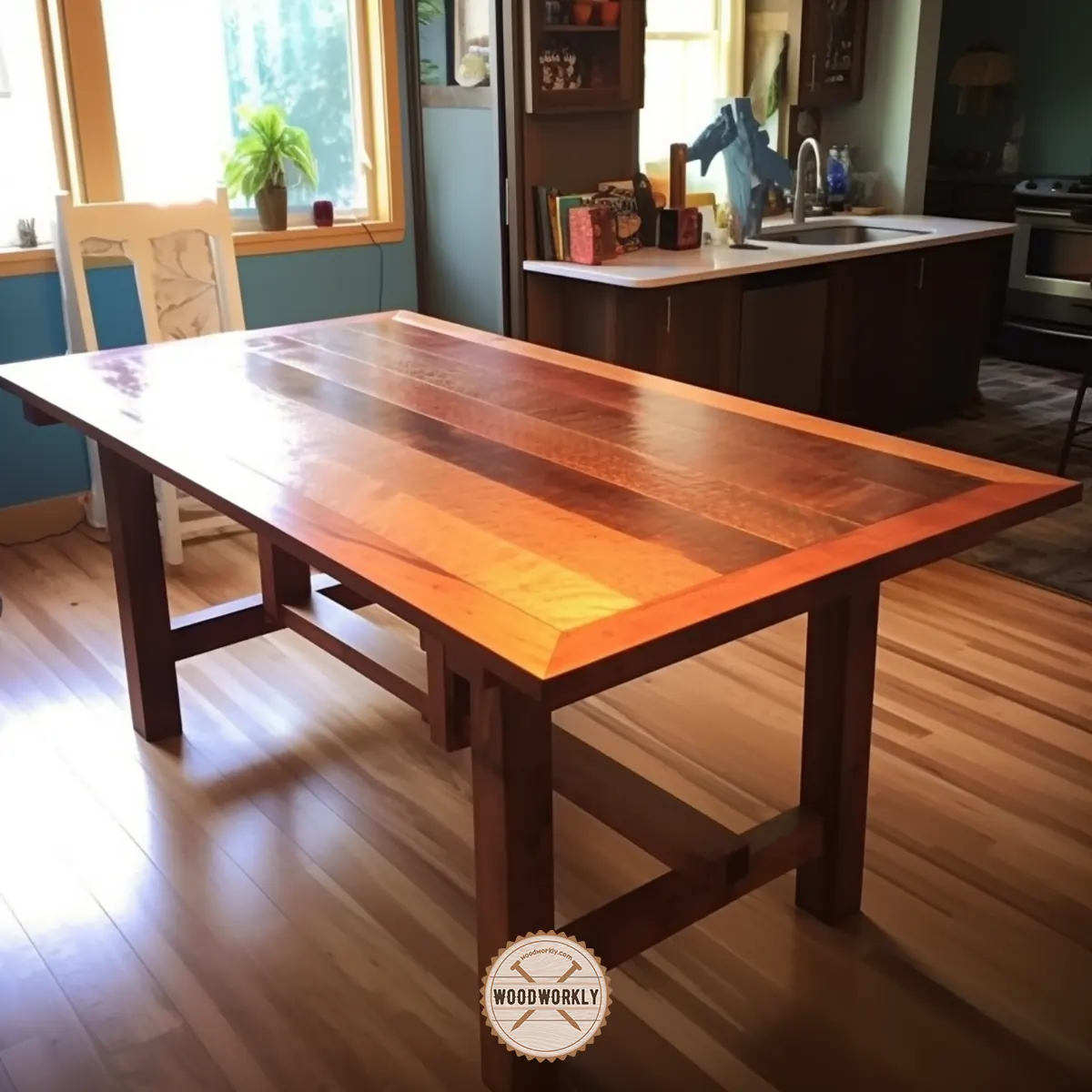
Can You Mix Grey and Brown Stains?
Yes, mixing grey and brown stains is possible. Grey stains and brown stains belong to the same undertone family.
Therefore, grey and brown stains don’t compete with each other, and no bleeding will happen.
Mixing 50% of brown stain and 50% of grey stain to a 1:1 ratio creates grey-brown custom color which is so hard to find in stores.
Can You Mix Gel Stain with Regular Stain?
Yes, you can mix gel stain with regular stain. The resulting color will be a mixture of two colors from the gel and regular stains.
As long as both strains belong to the same undertone family being a gel stain or regular stain is not an issue when mixing.
Can You Mix Paint and Stain Together?
Yes, you can mix paint and stain together. But, In the most literal sense, paint and stain should not be directly mixed together in the same container.
The two are fundamentally different, with stain designed to penetrate into the wood and paint designed to sit on top of the surface.
Mixing the two together would likely result in a mottled, uneven finish that doesn’t adhere properly to the wood.
Layering Stain Over Paint
Although you can’t directly mix paint and stain, you can use them together on the same piece of furniture to create unique effects.
One method is to apply paint to your piece first and allow it to dry completely. Once dry, you can then apply a coat of wood stain.
The stain will color the paint and the exposed wood areas, creating an antiqued or vintage effect.
Layering Paint Over Stain
Conversely, you can also apply paint over a stained piece of furniture. This technique is often used in distressing furniture.
First, the furniture is stained and allowed to dry. Then a layer of paint is applied over the stain.
Once the paint is dry, you can sand certain areas to allow the stain color to peek through, creating a distressed, aged look.
Tips for Mixing Paint and Stain
- Always Test First: Before you apply paint or stain to your entire piece of furniture, make sure to test it on a small, hidden area first to see how it will look.
- Prep is Key: Make sure your piece is clean and free of any previous finish before applying paint or stain. Sanding your piece can also help the new finishes adhere better.
- Seal the Deal: After you’ve achieved your desired look with your mix of paint and stain, make sure to seal your piece with a clear coat to protect your hard work and make it last.
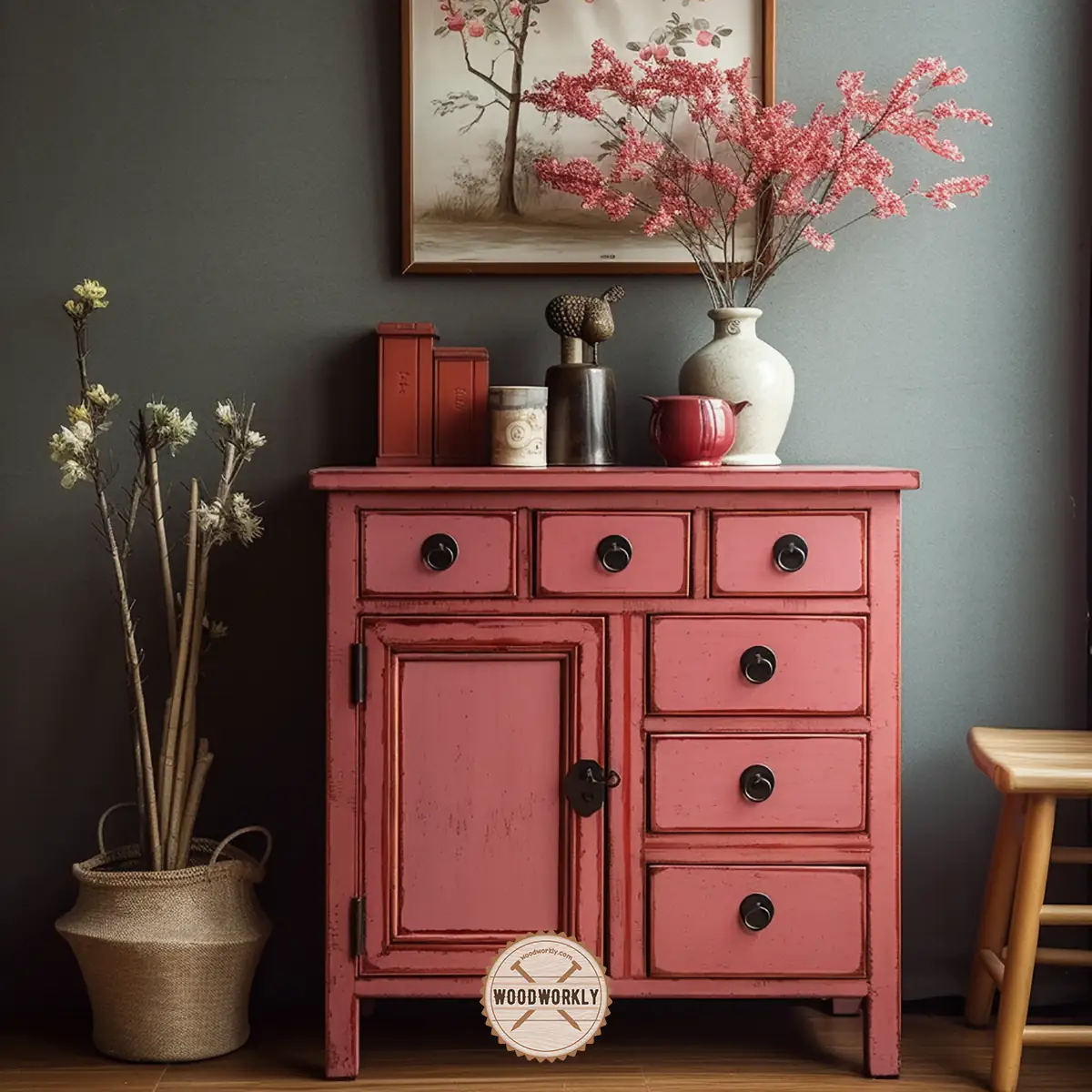
Can You Mix Wood Stain with Water?
Water-based stains are designed to be thinned with water, so yes, you can mix wood stain with water.
This is often done to adjust the intensity of the stain, allowing for more control over the color depth on the wood.
Adding water to the stain makes the color lighter, so you can build up layers of color gradually until you achieve the desired look.
However, it’s crucial to mix in the right proportions.
A common recommendation is to not exceed a 10% dilution; that is, for every 10 parts of stain, you would add one part water.
Over diluting could lead to poor binding of the stain to the wood, causing it to peel or flake over time.
Mixing Oil-Based Stains with Water
On the other hand, oil-based stains should not be mixed with water.
Oil and water do not mix, so trying to thin an oil-based stain with water will only result in a separated, ineffective product.
Oil-based stains are typically thinned with mineral spirits or paint thinner.
When to Dilute Stains
- Lighter Color: As we’ve discussed, diluting your stain can help you achieve a lighter color. This can be particularly handy when working with very dark stains or when you want a subtle, less saturated color.
- Easier Application: A diluted stain can also be easier to work with, particularly on large surfaces. It can prevent the stain from drying too quickly, giving you more time to work with it and ensure an even application.
- Cost Saving: Finally, diluting your stain can help it go further, potentially saving you money if you’re working on a large project or if your stain is particularly expensive.
Can You Mix Stains for a Rustic Look?
Yes, you can mix stains for the rustic look but, the stains you choose can have a big impact.
Dark stains can give the wood an aged appearance, mimicking the look of old barn wood or antique furniture.
Light stains, on the other hand, can give a softer, more subtle look, like sun-bleached wood or a washed-out paint effect.
Mixing the two can provide a pleasing contrast and a complex, layered look.
Congrats folks! Now you know all you need to know about, can you mix wood stains and how to do that properly!
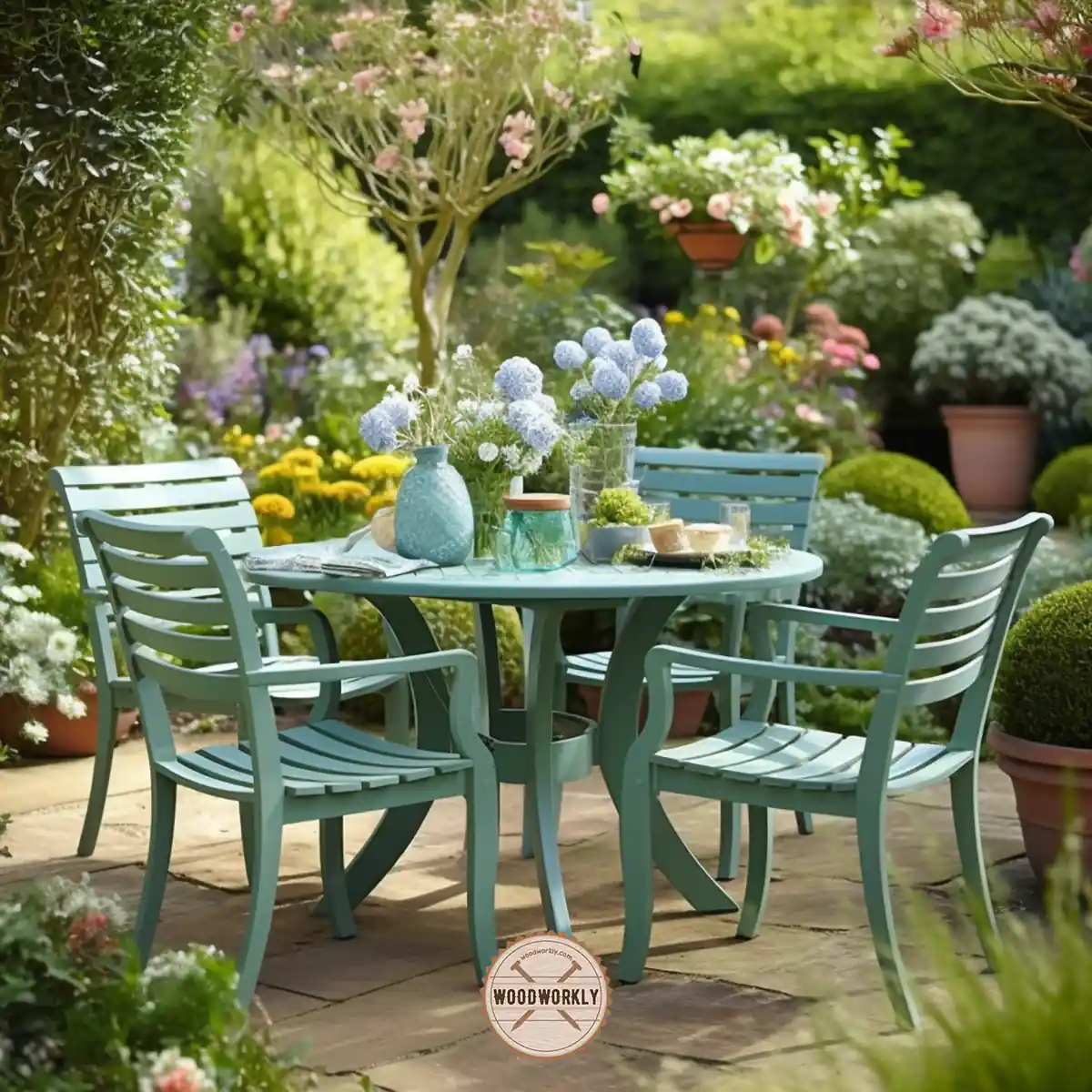
Let’s answer some frequently asked questions as well.
FAQs
Can you mix oil-based and water-based stains?
Generally, oil-based and water-based stains do not mix well. Since oil and water naturally repel each other, it’s best to stick to one type to prevent complications.
What happens when I mix stains of different colors?
Mixing different stain colors allows you to create custom shades. However, the final color might not be what you expect, so it’s always a good idea to test the mix on a scrap piece of wood first.
How can I ensure that different wood stains go together well?
The best way to ensure that different wood stains go together is by considering their undertones. Try to choose stains that share the same warm or cool undertones for a cohesive look.
How can I test if my mixed stains will work?
It’s always wise to test your stain mix on a scrap piece of wood first. This gives you an idea of how the color will turn out and how it looks when it dries, helping you avoid any surprises on your final piece.
Did I cover all you wanted to know about: Can You Mix Wood Stains?
In this article, we have deeply discussed can you mix wood stains and how to mix wood stains to create the custom color you want.
You can mix wood stains to create custom colors or effects. Ensure they’re the same type (oil-based, water-based, etc.) for successful blending. Always test the mixed stain on scrap wood before applying to your main project.
As long as both stains for similar undertones, they’ll mix pretty well.
But always make sure to do the experimental part more accurately to identify the correct ratio of each stain you need to take.
Otherwise, it is so difficult to get the desired output you want.
Furthermore, we have discussed, whether can you mix oil-based stains and water-based stains, and whether can you mix different brands of wood stains to get satisfying results.
Plus, I have answered some frequently asked questions as well.
Now I think you know everything about mixing wood stains and how to do that correctly.
Hope you have gained good knowledge about whether can you mix wood stains.
So, let’s start finishing your next woodworking project with a custom color stain that is so hard to find on the market.
Try to mix wood stains and get the color you want. Keep practicing and have fun!